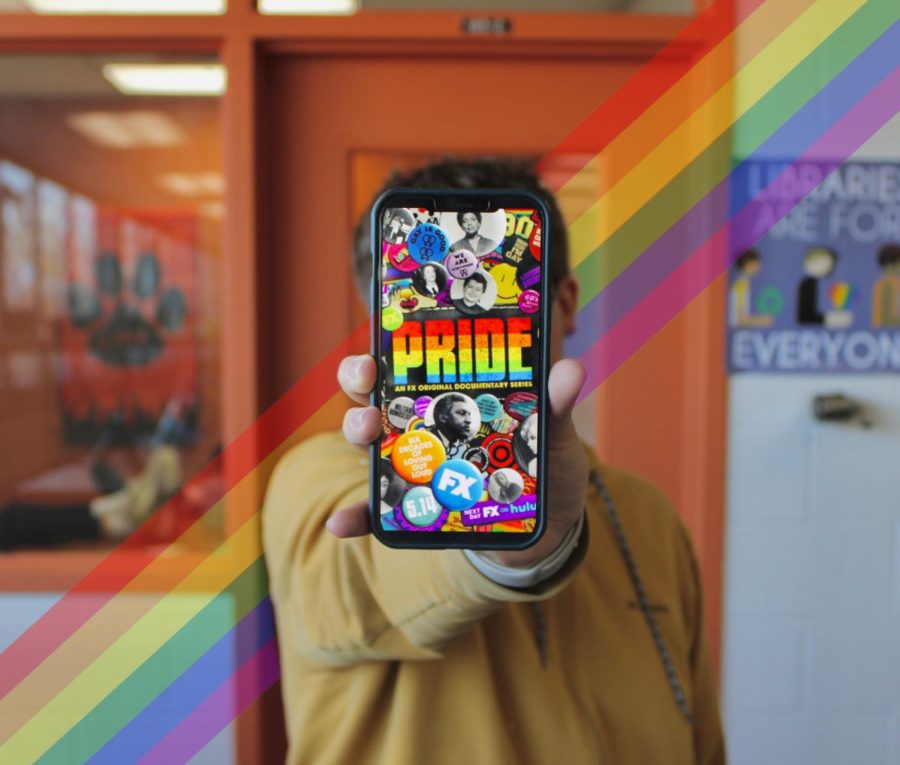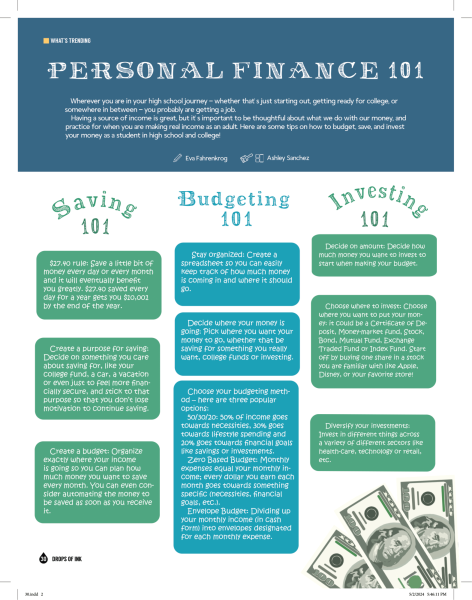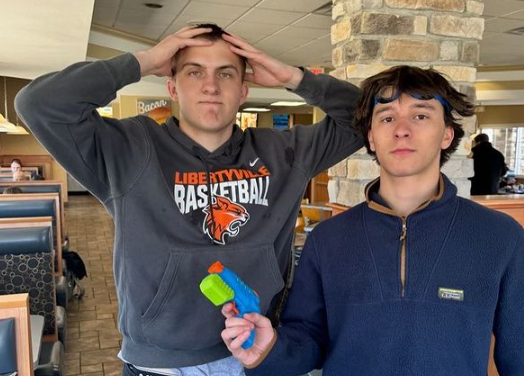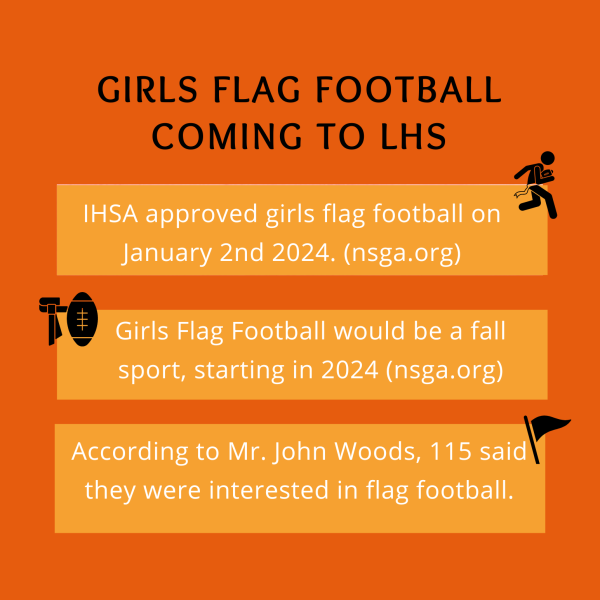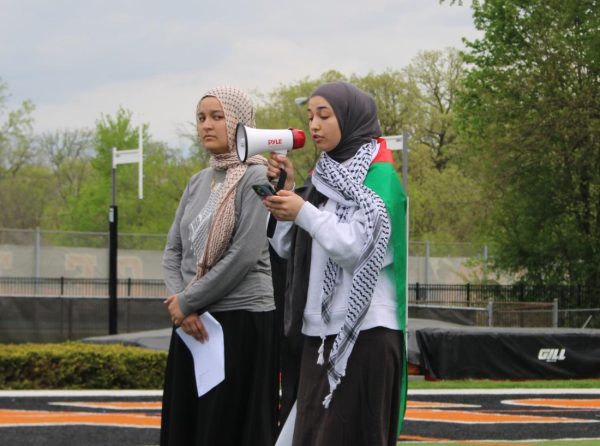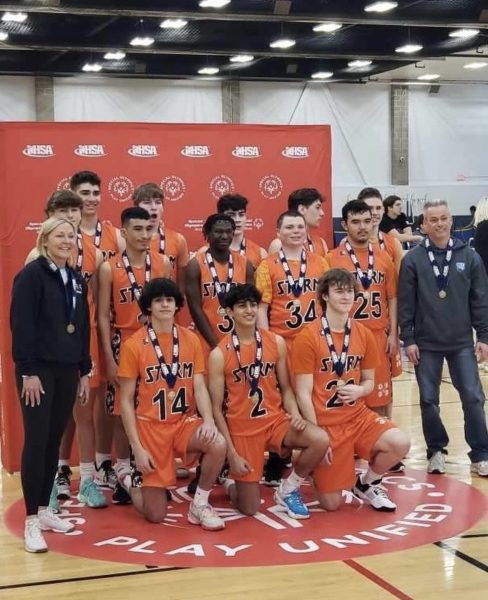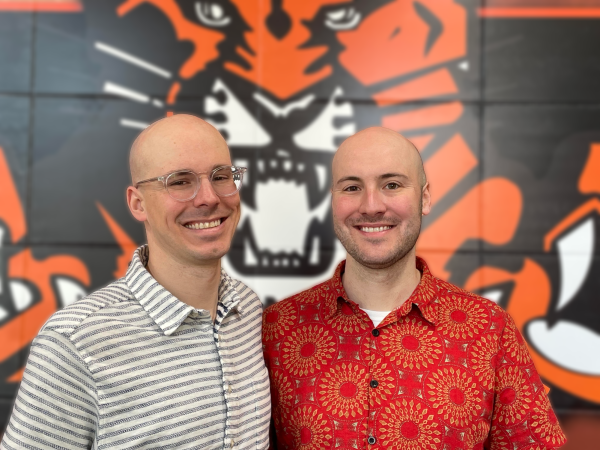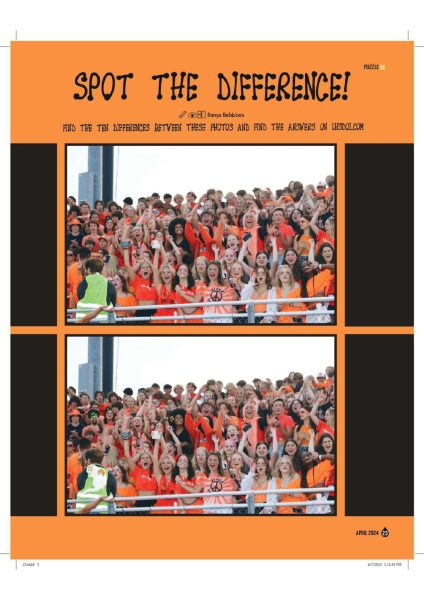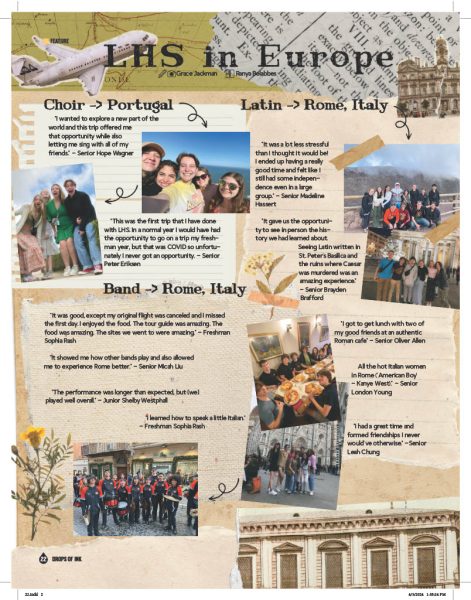Queer Representation: Problems and progress
Student displays ‘PRIDE’, a Hulu documentary about the struggle for civil rights in the LGBTQ+ community.
History has repeatedly tried to erase queerness from its stories, potraying same-sex partners as close friends or pen pals. The media tends to do the same thing. The vast majority of media, be that books or movies, tell only the story of cisgender, heterosexual couples and characters. Examples of queer relationships and characters are scarce, and often showcase harmful stereotypes in their representation.
TELEVISION
Only with the rise of streaming giants like Netflix that mass produce TV shows, and the gradual acceptance of queerness into mainstream media, queer stories are becoming more common and more authentic.
GLAAD, a media advocacy organization for LGBTQIA+ people, has been tracking the number of queer characters on TV over the last ten years. In their most recent report from the 2021-2022 TV season, 11.9 percent of characters on primetime TV identify as LGBTQIA+. This number has increased in recent years.
Similarly, there was a significant increase in the number of queer characters on streaming platforms. According to GLAAD, there were 358 regular and recurring LGBTQIA+ characters this year, compared to the 162 characters previously counted.
However, these upward trends in numbers don’t always translate into high quality characters. There are consistent problems in how LGBTQIA+ people are represented, both in who portrays them and who tells the stories.
Currently, many queer characters are depicted and written by straight writers and actors, something that makes many LGBTQIA+ people uncomfortable.
“If you have either a queer actor or someone who’s queer involved in [some] way,” Senior Row Potsic, who identifies as LGBTQIA+ explained, TV shows and movies “are done pretty well, because they understand the experiences.”
When queer people aren’t involved in the making of a story, it lends itself to be less authentic, focusing on and perpetrating stereotypes rather than experiences and reality.
“It can be seen as a mockery,” Potsic said, “or as [the actor] showing stereotypes based on their own beliefs.”
“If you are a straight actor or author, do your research and listen to the LGBTQIA+ people around you because they are going to be able to tell the story much better than you can,” Junior Charlie Tomlinson, who is part of the LGBTQIA+, community said. “They’re the ones who went through the experiences.”
Even when written responsibly, Tomlinson said that queer stories by straight people should be avoided as much as possible. Instead audiences and executives alike should choose to support queer writers and actors. However, with limited content options, Tomlinson expressed that well written and researched stories are better than nothing.
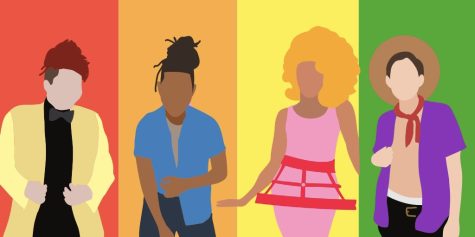
MOVIES
In addition to TV, queer representation is problematic in movies as well. According to NBC, movies are significantly behind TV in terms of representation and opportunities for queer stories to be told.
This all comes down to audience. Because there are more TV shows, their audience can be more niche, appealing to younger audiences who are often the ones seeking diversity and representation in what they watch.
On the other hand, movies – a medium that has a richer history and stricter rules – seek to appeal to a larger, and often older, audience. Movie studios are less willing to sacrifice views by casting new, unknown, and authentic queer actors, instead favoring well known actors who guarantee more views.
However, this doesn’t make TV immune to negative representation or treatment of queer people. There are many occasions in which streaming giants have canceled queer shows after a single season, even when receiving more views and higher ratings than heteronormative shows.
Netflix specifically was recently called out for disproportionally canceling shows with queer female-presenting leads, such as “First Kill,” “Atypical,” and “I am Not Okay With This,” while supporting queer shows featuring men, such as “Heartstopper.”
Though “Heartstopper” may be a fan-favorite and comfort show for many queer people, it still shows the greater problem of women loving women shows being cancelled. Despite receiving less viewing hours than “First Kill,” a paranormal lesbian romance, “Heartstopper” was renewed for two more season, while “First Kill” was canceled.
This being said, lesbian shows aren’t the only ones on the chopping block. According to Them, a news outlet specifically covering LGBTQIA+ issues, 30 shows with LGBTQIA+ people were cancelled or ended, despite seeing an uptick in numbers of queer characters. However, 21 of those 30 shows featured female queer characters.
There also remains a lack of non-binary, genderfluid and trans representation in media. GLAAD counted 42 trans characters, 17 non-binary characters, and no genderfluid characters in their most recent report.
“As someone on the gender fluid spectrum,” Tomlinson mentioned. “I would love to see more content on the struggles of gender fluidity and how day to day life is when you don’t know how you’re going to feel when you wake up the next morning.”
Similarly, asexual and aromantic perspectives are often missing from media.
Various perspectives are also lacking from media’s representation of queer people, specifically perspectives of people of color, whose experiences with queerness are often significantly different than those of white LGBTQIA+.
“I feel like a lot of queer authors are white,” Senior Maya Hoffmann said, “and I’ve been trying to diversify that.”
BOOKS
Hoffmann also put an emphasis on representation in books, which is less acknowledged, but offers a wider range of options, something Hoffman enjoys. Vogue magazine analyzed the growth of queer literature, going so far as suggest that it is the “golden age” of LGBTQIA+ stories.
Like film and TV, publishing is starting to catchup with their representation, leading to more and more queer books being written and published in recent years. Often authors face the same issues as those in the film industry, as lesbian stories are also significantly less successful, certain people in the LGBTQIA+ community remain underrepresented, and straight authors continue to dominate the marketplace.
However despite all of these negitive aspects, queer stories across platforms are feeling less of a need to appeal to a straight audience, expanding from the typical coming out story or tragic queer experience, to encompass stories that focus more on the uniqueness, joy and love of the LGBTQIA+ community.
Characters and stories are becoming more authentic, though there is still work to be done.
There remains the harmful tropes of the “gay best friend” or “token gay character” in which queerness is inserted for inclusivity points and not to tell a story. Certain groups remain excluded from the queer narrative in media. Straight voices continues to push out queer ones.
But there is also a growing amount of good, authentic representation– notably “Heartstopper,” a favorite of Potsic and Tomlinson, and “Night at the Telegraph Club,” a notable novel that Hoffman enjoyed.
Original and genuine LGBTQIA+ representation is incredibly important, especially for teens. Stories they see in the media can lead to how they view certain groups for the rest of their lives, and can give them the validation they might need to feel comfortable being who they are.



